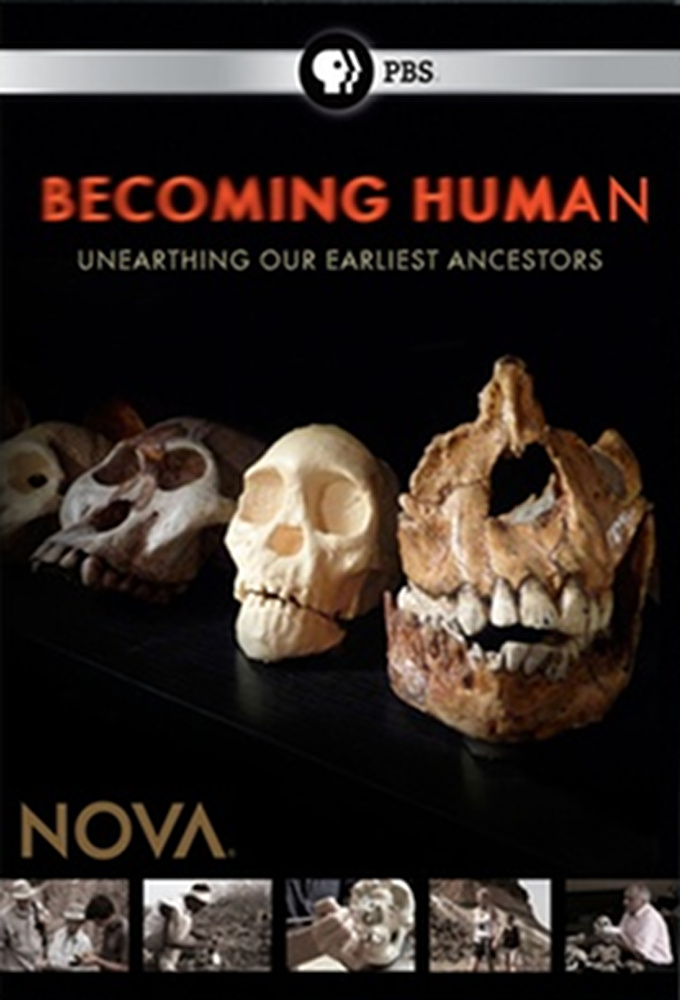
Becoming Human
Non notée
Année : 2011
Nombre de saisons : 1
Durée moyenne d'un épisode : 60 minutes
Genre(s) : Documentaire
Nothing is more fascinating to us than, well, us. Where did we come from? What makes us human? An explosion of recent discoveries sheds light on these questions, and NOVA's comprehensive, three-part special, "Becoming Human," examines what the latest scientific research reveals about our hominid relatives—putting together the pieces of our human past and transforming our understanding of our earliest ancestors. Featuring interviews with world-renowned scientists, each hour unfolds with a CSI-like forensic investigation into the life and death of a specific hominid ancestor. The programs were shot "in the trenches" where discoveries were unearthed throughout Africa and Europe. Dry bones spring back to life with stunning computer-generated animation and prosthetics. Fossils not only give us clues to what early hominids looked like, but, with the aid of ingenious new lab techniques, how they lived and how we became the creative, thinking humans of today.
Saisons

Saison 1
Épisodes
Choisissez votre saison au dessus et découvrez les épisodes qui vous attendent !
Épisode 1 - First Steps
11 août 2011
Part 1, "First Steps," examines the factors that caused us to split from the other great apes. The program explores the fossil of "Selam," also known as "Lucy's Child." Paleoanthropologist Zeray Alemseged spent five years carefully excavating the sandstone-embedded fossil. NOVA's cameras are there to capture the unveiling of the face, spine, and shoulder blades of this 3.3 million-year-old fossil child. And NOVA takes viewers "inside the skull" to show how our ancestors' brains had begun to change from those of the apes.
Épisode 2 - Birth of Humanity
11 août 2011
In "Birth of Humanity," the second part of the three-part series "Becoming Human," NOVA investigates the first skeleton that really looks like us–"Turkana Boy"–an astonishingly complete specimen of Homo erectus found by the famous Leakey team in Kenya. These early humans are thought to have developed key innovations that helped them thrive, including hunting large prey, the use of fire, and extensive social bonds. The program examines an intriguing theory that long-distance running–our ability to jog–was crucial for the survival of these early hominids. Not only did running help them escape from vicious predators roaming the grasslands, but it also gave them a unique hunting strategy: chasing down prey animals such as deer and antelope to the point of exhaustion. "Birth of Humanity" also probes how, why, and when humans' uniquely long period of childhood and parenting began.
Épisode 3 - Last Human Standing
11 août 2011
In "Last Human Standing," the final program of the three-part series "Becoming Human," NOVA examines the fate of the Neanderthals, our European cousins who died out as modern humans spread from Africa into Europe during the Ice Age. Did modern humans interbreed with Neanderthals or exterminate them? The program explores crucial evidence from the recent decoding of the Neanderthal genome. How did modern humans take over the world? New evidence suggests that they left Africa and colonized the rest of the globe far earlier, and for different reasons, than previously thought. As for Homo sapiens, we have planet Earth to ourselves today, but that's a very recent and unusual situation. For millions of years, many kinds of hominids co-existed. At one time Homo sapiens shared the planet with Neanderthals, Homo erectus, and the mysterious "Hobbits"–three-foot-high humans who thrived on the Indonesian island of Flores until as recently as 12,000 years ago.
Vidéos
Oups aucune vidéo pour le moment... Revenez plus tard pour des aventures en images !

Aucun avis pour le momment...